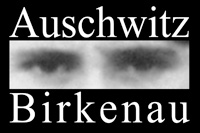




BIb
(German: Bauabschnitt Ia – construction segment 1, sector b)
The first of the nine camps built by the Germans in Birkenau. Several thousand Soviet POWs died in the course of the construction work, which began in October 1941. It consisted of 15 masonry barracks constructed of bricks and wood from demolished houses that had belonged to Polish farmers expelled from nearby villages and 12 wooden barracks. Within the camp, there was also a kitchen, bathhouse, washrooms and latrines.
The camp went into operation in mid-March 1942, when the approximately 600 POWs who remained alive were transferred from Auschwitz I, together with the most serious cases from the camp hospital. It also became quarters for the penal company, the Sonderkommando and several thousand Jews. Starvation, hard labor and exceptionally poor living conditions resulted in a high death rate among prisoners. The completion at this time of the bathhouse, kitchen, and sanitary buildings failed to reduce the number of deaths because a typhus epidemic broke out in Birkenau and claimed thousands of victims.
The average camp population amounted to about 10,000 prisoners, who in July 1943 were transferred to the newly constructed camp BII d. Female prisoners from the women’s camp (BIa) moved into the vacated barracks.
